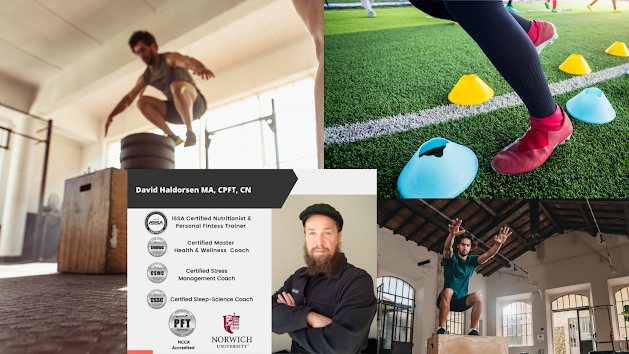2 Science-Backed Strategies to Fall Back to Sleep Fast - When You Wake Up in the Middle of The Night:
For most people, it’s critical for health and wellbeing to go right back to sleep if they wake up too early. It’s also critical for next day-cognitive functioning.
The best available research is pretty clear: you need to get 7 hours of sleep most nights, if you’re a typical healthy adult. This recommendation seems to be strongly rooted in this massive 2016 meta-analysis involving a reported 2,430,336 participants which recommended “that 7 hours/day of sleep duration should be recommended to prevent premature death among adults.”
Ideally, you want your 7 hours of time asleep to be uninterrupted, although I have not found any evidence that very short sleep interruptions (for example getting up to go the bathroom and then right back to sleep) are a major sleep-quality disruptor.
Here are two, powerful, rapid-relaxation techniques that you can use not only to fall asleep faster, deeper and longer -but also to fall back to sleep quickly if you wake up in the middle of the night:
1. The Non-Sleep-Deep Rest Protocol NSDR:
The Non-Sleep-Deep Rest (NSDR) Protocol is a technique that helps you relax and rest, even if you're unable to sleep. It works by slowing down your brain waves, similar to what happens during deep sleep, which is an essential stage of sleep when your body rejuvenates and heals itself. NSDR can also help activate your parasympathetic nervous system, improving markers of good cardiovascular health.
By using NSDR, you can experience the same benefits of deep sleep without actually falling asleep. This can be especially helpful if you wake up in the middle of the night and have trouble falling back asleep.
NSDR has been shown to have numerous potential health benefits, including aiding in memory retention, enhancing learning and cognitive function, relieving stress, and improving sleep quality and focus.
Try incorporating NSDR into your sleep-routine to experience the incredible benefits of deep sleep and improve your overall sleep quality. Here is a fantastic short guided video that you can listen to if you wake up in the middle of the night. You can also use this technique during the day to maximize cognitive performance through daytime deep-reset breaks:
2. Progressive Muscle Relaxation (PMR)
Progressive muscle relaxation is a technique based on tensing and then relaxing the different muscle groups in your body, often in a specific sequence. This technique is designed to help individuals release muscle tension and promote physical relaxation to reduce stress.
It is helpful to focus on specific breathing techniques as part of your progressive muscle relaxation practice, such as deep breathing and controlled slow breathing. For example, you want to breathe in while you tense the muscle and breathe out slowly through your mouth or nose while releasing the tension.
Combining muscle tension release with relaxation breathing techniques can help relax the body and prepare to help you fall asleep again fast.
A growing body of scientific evidence strongly suggests that progressive muscle relaxation is an effective protocol for promoting sleep.
For example, a resent systematic review of studies found that progressive muscle relaxation was associated with improved sleep quality and reduced sleep onset latency or the length of time needed to fall asleep. Other studies have also found that progressive muscle relaxation may reduce insomnia symptoms and other sleep disorders.
The exact mechanisms by which progressive muscle relaxation may improve sleep are not fully understood. Still, the technique may help reduce physical manifestations of the stress response by reducing muscle tension - one of the few noticeable signs of physical stress.
Diagrammatic breathing also plays a vital role in the effectiveness of PMR in inducing deep relaxation leading to sleep. More specifically:
Diaphragmatic breathing is a technique that involves slowing down your breathing rate and focusing on the breath. It is believed to induce deep relaxation by activating the parasympathetic nervous system. Diaphragmatic breathing may do this by stimulating the vagus nerve, which is located in the lower brainstem and extends to the abdominal organs.
To practice slow diagrammatic breathing as a stand alone stress management technique and to enhance your PMR practice:
- Find a maximally comfortable chair, assume a seated position with good posture, and slowly close your eyes.
- Take some slow, deep breaths through your nose and then out through your mouth.
- Please pay attention to the feeling of your breath as it flows in and then out of your body.
- Specifically, notice the sensation of the air filling and expanding your diaphragm and the feeling of the air brushing against your nostrils, mouth, and throat.
- Extend the duration of each inhale and exhale, taking about twice as long as you inhale until you find an in/out rate that is most relaxing for you.
- Continue to focus on your breath and slow your breathing rate.
As you practice this technique, you may feel a sense of relaxation and calmness wash over you.
Bonus Tip: New research has found that a simple 5-minute breathwork practice called "cyclic sighing" aka "the physiological sigh" can be significantly more powerful and fast-acting than mindfulness meditation as a stress management tool. And it can start to work in just seconds! Take a minute or two to check out this step by step guide.
Now that you've got a good basic sense of how to do the breathing technique(s) you can use while doing PMR, here's the best short PMR training video I've ever found:
Hopefully these 2 powerful techniques NSDR and PMR will help you fall asleep or back-to-sleep fast.
But, remember, if sleep problems persist for more than 1 or 2 nights you need to consult a qualified medical expert for help and direction. Sleep quality is just so critical to your overall health and wellbeing - not to get enough of it each night.
Hope that helps! - David.



Comments